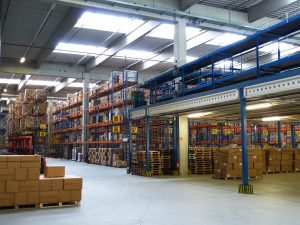Smart Warehouse Technologies
Technology is rapidly changing and it is an influential part of our day-to-day lives. Supply chain operations have gone through a lot of advancements, with the rise in technology and it’s advancing so quickly that it is difficult to predict what is coming next. Warehousing is an important part of all supply chains. Ways of carrying out warehousing operations have changed with the new automated technologies and modern techniques in the warehouses. We can say that better warehouse technology can be of greater help in the proficient management of warehouses. Experts have recommended that usage of warehouse technology which will enhance throughout improves inventory control, reduce product damage, enhance the visibility of the stock location and optimize cost on resources.
Effective warehouse technologies serve as green measures that reduce carbon footprints.
This sentiment is particularly true about the fields of warehousing, logistics, and distribution. If influence purchases or you buy, within your operation, you’ve been well aware of the need for a “smart warehouse.” Once regarded as a far-fetched pipe dream, or even a buzzword, the smart warehouse is becoming a reality, backed by ready-to-purchase technologies that are changing the way warehouses do business.
We have found out the most popular and advanced products and processes which will lead to smart warehouse technologies:
1. Automated Guided Vehicles (AGV)
2. Automated Storage and Retrieval Systems (AS/RS)
3. Collaborative Robots (Cobots)
1. Automated Guided Vehicles (AGV’s)
An automated guided vehicle is a portable robot that uses radio waves, vision cameras, magnets, or lasers for navigation. It follows marked long lines or wires on the floors. There is no better way to ramp up your storage and retrieval processes than to integrate automatic guided vehicles (AGVs) into your warehouse. As technology moves forward the structural integrity of AGVs is evolving. The models that have been in the market for some time have also proven safer and yield a quicker ROI than manual labor. Some of their most important functions include a rack, pallet, and other container storage, and even functions that control and automate the entire receiving process.
2. Collaborative Robots (Cobots)
We’ve spoken briefly about the benefits of fully autonomous and robotic technologies, but it’s not always feasible for every warehouse to immediately embrace such technology, especially considering that this implementation requires sizable funds and infrastructure changes. That’s why more and more warehouses are embracing collaborative robots, or cobots, autonomous elements that built to work with your existing associates, not without them. Cobots allow warehouses to keep many of their processes and infrastructure design choices intact and still benefiting from the optimized workflow that fully autonomous elements provide.
3. Automated Storage and Retrieval Systems (AS/RS)
Automated storage and retrieval systems have been around for years, and they have done their job of improving throughput and accuracy. It contains a variety of computer control systems. We can place and retrieve the loads automatically to defined storage locations with the help of these control systems. Also, they have often been regarded as being clunky, expensive, and inflexible. But they are having their original benefits like reduced labor costs/restraints, modular possibilities, and of course increased accuracy. Introduce the technologies which make sense for your business and its all processes first and you can see any warehouse will become a “smart” warehouse. With this, you can make your warehouse smarter and more efficient.

